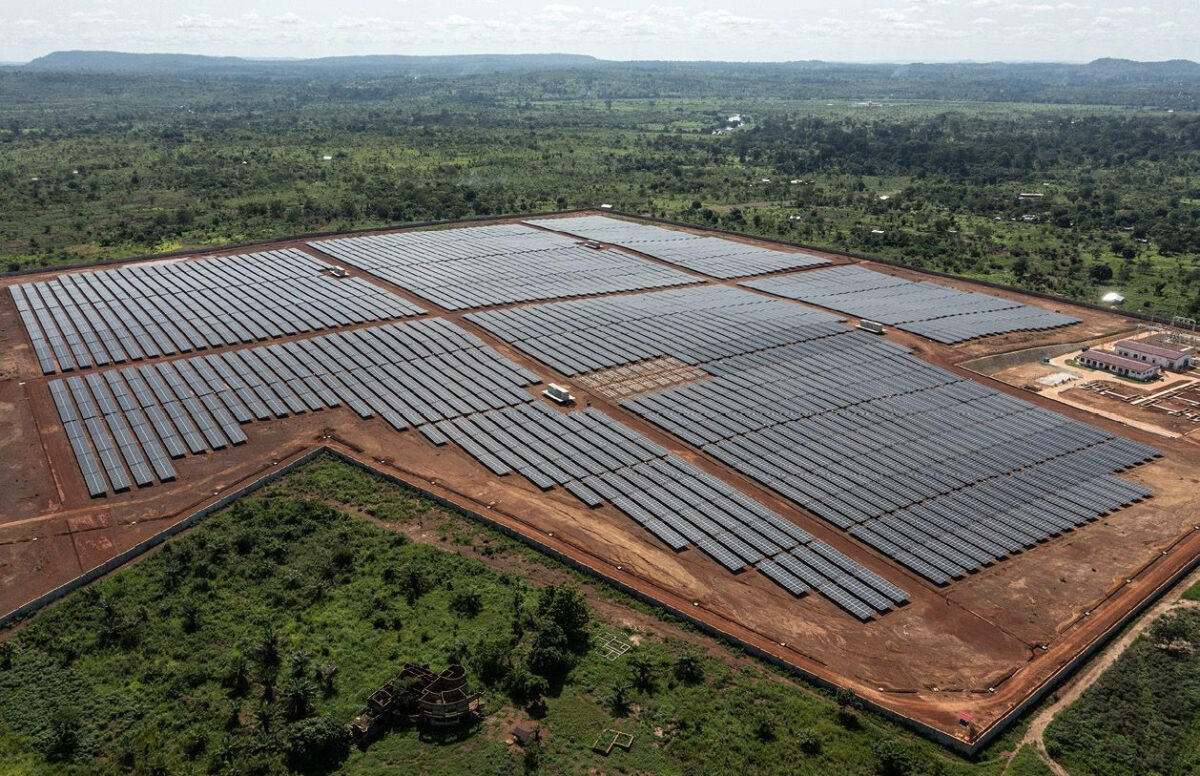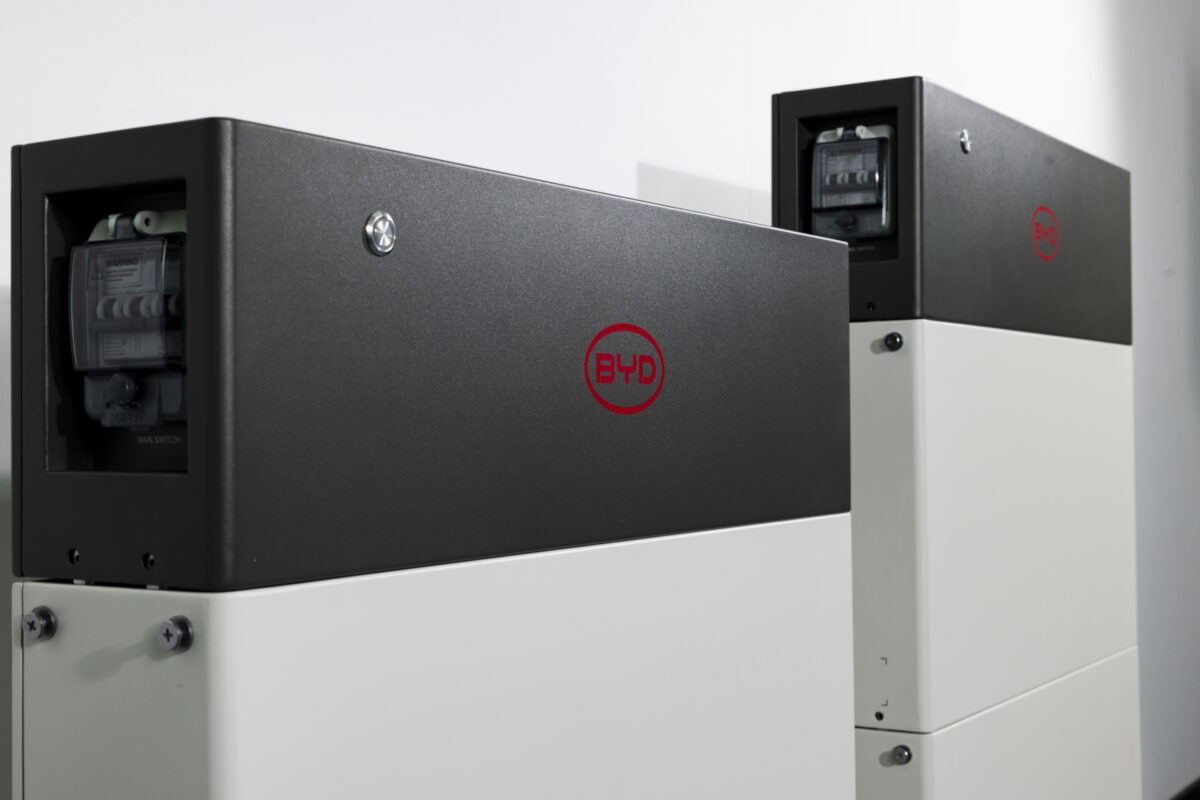Until relatively recently, African solar projects such as the 1.8 GW Benban site in Egypt were in part funded by donor support. This is not a sustainable long term model because of the limited finance available from donor nations. It would be more effective for donors and multilateral organizations to help encourage greater private sector participation through funding PV projects directly, investing in grid development, and encouraging governments to provide attractive investment terms.
Around 600 million of the African continent’s 1.5 billion people are currently without access to electricity at home, a number which means 83% of the world’s electricity-deprived people are in Africa. Africans are being connected to grids and benefiting from residential PV kits, but the number being connected is growing more slowly than the continent’s population. As a result, many continue to rely on firewood or charcoal for lighting and cooking and those with electrical devices must pay to charge them at solar kiosks or rely on friends and family.
Lack of access to electricity is a big brake on economic growth and improvements to living standards so multilateral bodies, donor organizations, and African governments have launched a series of programs aimed at improving the situation. By far the biggest is the Mission 300 plan launched by the World Bank Group and the AfDB in April 2024, which aims to halve the number of Africans without access to electricity to 300 million by 2030.
A combination of the continent’s massive untapped solar resource and falling PV project costs mean that solar power will be key to achieving the Mission 300 goal. There is likely to be increased funding both for solar developers and for ancillary support, such as grid improvements, under the Mission 300 initiative.
Making connections
Under the program, the World Bank has taken responsibility for helping to offer 250 million people access to electricity, and the AfDB 50 million. The organizations acknowledge that massive private sector investment will be crucial to reaching their target, so two World Bank entities – the private-sector-focused International Finance Corporation (IFC) and the Multilateral Investment Guarantee Agency (MIGA) – are collaborating to provide better incentives and guarantees for investors in the sector.
World Bank support is being funnelled through a range of initiatives such as the Accelerating Sustainable and Clean Energy Access Transformation Program, covering Southern and Eastern Africa. The World Bank’s International Development Agency (IDA) has committed $5 billion to the program and hopes to leverage another $10 billion in additional investment.
For its part, the AfDB has launched its Desert to Power project with the aim of developing a huge grid powered by 10 GW of solar generation capacity in the 11 countries in the Sahel region of Northern Africa, although specific solar project details are limited. From 2016 to 2022, the AfDB approved funding of $8.3 billion for energy projects, of which 87% were renewables-based and 2.6 GW of clean energy capacity has already been installed.
The multilaterals help finance PV projects directly but much of their support is targeted at grid investment; guarantees that reduce offtaker, currency, sovereign, and other investment risks; and advisory services. While advisory services can be beneficial, advisors engaged by multilaterals can sometimes increase the scope of projects and delay processes, according to Hans Olav Kvalvaag, CEO of the Release division of project developer Scatec.
Fabrizio Bonemazzi, training and capacity building area manager at the RES4Africa foundation, told pv magazine that multilateral financing can support pilot projects that help unlock specific markets at an early stage of development, with private finance easier to secure once a market has been opened up.
The Central African Republic (CAR) is one of the most difficult markets to enter. The country had just 38 MW of total installed power generation capacity in 2023, the same amount it had in 1980, and an electrification rate of just 14% of its population, falling to 2% in rural areas.
In response, the IDA provided a grant, rather than a loan, to develop the 25 MW Danzi solar project, which was completed in November 2023 by China’s Shanxi Investment Group. The IDA typically provides loans or equity-based funding. The World Bank hopes to lift the CAR’s electrification rate to 50% by 2030 via a string of further PV projects.
Special support
The World Bank Group has directly supported more than 15 GW of solar capacity worldwide to date, with financing terms based on recipient countries’ risk of debt distress, gross national income per capita, and creditworthiness. Its role is particularly important in more complex African jurisdictions with higher degrees of risk, noted Release’s Kvalvaag.
“The African energy transformation cannot happen without multilaterals – the private sector has neither the funding nor the risk appetite to enter these markets without the risk mitigation that multilaterals can offer,” said the CEO. He added, the most important reason for the big gap between Africa’s renewable energy potential and the amount of new capacity developed is the cost of capital and lack of available finance.
The World Bank provides technical assistance to public sector bodies to address finance bottlenecks. Supporting government ministries, regulatory bodies, and utilities to build policy and regulatory frameworks is at least as important as PV financing, according to RES4Africa’s Bonemazzi.
Private sector incentives
The IFC provides loans for private sector PV investment in Africa. For instance, Release by Scatec has signed a $100 million loan agreement with the IFC to support its projects in Africa with 35 MW of solar and a 20 MW battery in Chad plus 36 MW solar and a 20 MW battery in Cameroon already agreed.
“Multilaterals can help bridge this gap by offering concessional finance where commercial capital is too expensive due to higher risks and by providing guarantee products that in turn can help enable financing,” said Release’s Kvalvaag. They can also mitigate the impact of global trends such as European renewable energy subsidies making it difficult for the developing world to compete.
Multilaterals should avoid donating power plants based on concessional funds, where possible, because “this creates unrealistic expectations with governments and utilities, making it impossible for private companies to compete with ‘free’ power plants,” added the CEO.
The African solar sector has recently begun to grow more strongly, with installed, non-residential generation capacity increasing 3.7 GW in 2023, to 16 GW, but more private sector capacity is needed to speed up the rate of development.
Jan Friedrich Kappen, lead energy specialist at the World Bank, told pv magazine there are major barriers to scaling up private finance for PV in Africa, including the lack of an enabling environment for private investment, the absence of open and transparent procurement mechanisms, lack of access to risk mitigation coverage, grid integration constraints, high offtaker risk, and permitting difficulties.
Concessional finance from multilateral bodies can facilitate institutional capacity building within ministries of energy and utilities, said Kvalvaag, adding, better coordination between different multilaterals and development finance institutions is also needed.
Rather than projects solely being developed by non-African companies, it is vital that such finance is used to encourage the growth of African developers and supply chains. In July 2023, a solar developer in Democratic Republic of Congo (DRC), Nuru, benefitted from $40 million in equity funding from an IFC-led consortium, to enable the construction of 13.7 MW of new projects in the east of the country.
Guarantees
Guarantees are vital to ease investor concerns. MIGA houses the World Bank platform for political risk insurance, credit enhancement, and trade finance guarantees, including for African solar developers. It offers four main insurance products covering transfer restriction and currency inconvertibility; war and civil disturbance; breach of contract by government and state-owned entities; and expropriation.
“Our guarantees protect investments against non-commercial risks and can help investors access funding sources with improved financial terms,” Jessica Stiefler, acting global head and sector manager for energy and extractive industries at MIGA, told pv magazine. MIGA provides cover for up to 90% of equity investments and 95% of debt investments. Over the last seven years, it has issued guarantees covering $1.1 billion of solar investments worldwide.
In July 2024, MIGA awarded a $23.5 million, 18-year guarantee to Amea Power to support the development of the 120 MW Kairouan solar project in Tunisia. The project, which will be the country’s first large-scale solar independent power producer, also benefits from $26 million of finance from the AfDB, including $13 million from its Sustainable Energy Fund for Africa, a multi-donor fund that the lender manages.
In September 2024, MIGA and the International Solar Alliance (ISA) – comprised of nations in the tropics – created the MIGA-ISA Solar Facility specifically to provide risk mitigation for solar power projects in developing countries, initially just in sub-Saharan Africa.
In July 2024, the World Bank launched a platform to bring together guarantee products from across the group’s divisions to simplify the process by giving clients a single entry and due diligence process. It now also offers project-based payment guarantees to utility-scale solar developers that provide protection against losses to private entities, or a foreign public entity, arising from government failure to meet payment obligations, including under power purchase agreements.
The World Bank’s Kappen pointed out, however, “as markets mature, the private sector is best placed to play a larger role in mitigating project- and technology-related risks and scaling up financing in solar … generation.”
By Neil Ford
This content is protected by copyright and may not be reused. If you want to cooperate with us and would like to reuse some of our content, please contact: editors@pv-magazine.com.



“Africans are being connected to grids and benefiting from residential PV kits, but the number being connected is growing more slowly than the continent’s population.”
See the clever misdirection? The first clause yokes together grid and off-grid electrification. In the second. off-grid disappears: it’s only asserted for grid connections, but if you don’t read very carefully, you think that the low growth in access applies to solar too. This is emphatically not so. The African population is growing at 2.4%, on a slowly declining trend, Solar PV installation in Africa has a roughly 30% CAGR, ten times the population growth. Over half of this is currently off-grid (World Bank).
Experts only resort to sleight of hand like this to cover up a weak case. The development institutions have been vital in getting solar off the ground in Africa, and deserve thanks for this. Looking forward, they are much less needed. Adam Smith’s invisible hand is taking over. Look what is happening in Pakistan, where imports of PV modules from China have exploded to an unbelievable 20 GW this year, in what amounts to a massive consumer strike against the mismanaged and coal-driven grid supplier, stoked by the glut crash in Chinese module supply and crash in prices. It’s not policy-driven but a revolt against bad policy. The same is going to happen all over Africa. Hold your hats, it’ going to be a wild ride.